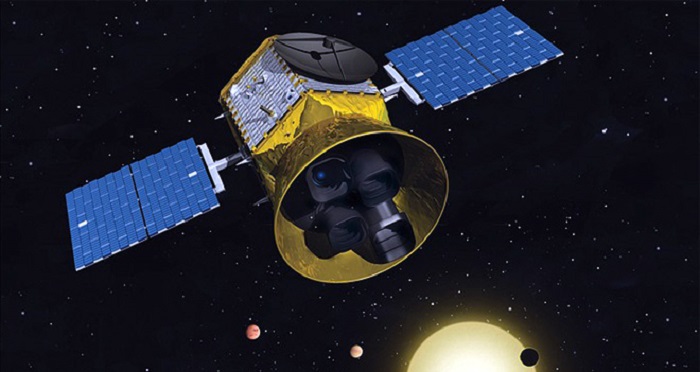.

NASA has selected a $200 million mission to carry out a full-sky survey for exoplanets orbiting nearby stars. The space observatory, called the Transiting Exoplanet Survey Satellite (TESS), is scheduled for a 2017 launch.
Like the currently operational Kepler Space Telescope, TESS will be in the lookout for exoplanets that orbit in front of their host stars, resulting in a slight dip in starlight. This dip is known as a “transit” and Kepler has revolutionized our understanding about planets orbiting other stars in our galaxy by applying this effective technique. As of January 2013, Kepler has spotted 2,740 exoplanetary candidates.
Although Kepler’s powerful optics have allowed astronomers an unprecedented look into multiplanetary systems, identifying worlds as small as Mercury to many times the size of Jupiter, it is restricted to gazing at a small field of view — accounting for a mere 0.28 percent of the sky. Tiny it may be, but 145,000 main sequence stars fill that view, providing us with a gargantuan amount of transit data for hundreds of exoplanets.
But TESS will be surveying the entire sky, supercharging our profound quest to understand how many stars like our own could host worlds, not too dissimilar to Earth, in their habitable zones.
“TESS will carry out the first space-borne all-sky transit survey, covering 400 times as much sky as any previous mission,” said TESS lead scientist George Ricker, of the Massachusetts Institute of Technology (MIT) Kavli Institute for Astrophysics and Space Research (MKI). “It will identify thousands of new planets in the solar neighborhood, with a special focus on planets comparable in size to the Earth.”
“The TESS legacy will be a catalog of the nearest and brightest main-sequence stars hosting transiting exoplanets, which will forever be the most favorable targets for detailed investigations,” added Ricker.
According to a NASA announcement on Friday, “TESS will use an array of telescopes to perform an all-sky survey to discover transiting exoplanets ranging from Earth-sized to gas giants, in orbit around the nearest and brightest stars in the sky. Its goal is to identify terrestrial planets in the habitable zones of nearby stars.”
Kepler was launched in 2009 and recently saw its mission extended to 2016. It is hoped that the space telescope will detect unequivocal evidence for the presence of an Earth-sized world orbiting within its host star’s habitable zone — the region that is not too close and not too far from a star that permits liquid water to exist on a rocky planet’s surface.
Although we are some time off from probing a distant potentially habitable world’s atmosphere for the presence of liquid water or chemical traces of life, Kepler — along with supporting observations by other space- and ground-based instrumentation — is giving us a tantalizing hint of the preponderance of small rocky worlds in the Milky Way. Using Kepler data, astronomers extrapolated an estimated exoplanetary population for the Milky Way earlier this year and arrived at a staggering number: 100 billion. This, in turn, suggests there are many, many multiplanetary systems out there.
TESS will undoubtedly become the “next generation” of exoplanet hunters, revolutionizing our perspective on our cosmic backyard once again.
Submitted as concepts for NASA’s Explorer program, TESS and the $55 million Neutron Star Interior Composition Explorer (NICER) were chosen from four options as they “offer the best scientific value and most feasible development plans.” NICER will be attached to the space station to measure the “variability of cosmic X-ray sources, a process called X-ray timing, to explore the exotic states of matter within neutron stars and reveal their interior and surface compositions,” according to the NASA news release.
NASA’s Explorer program is intended to provide frequent, low-cost science missions. Satellite missions are capped at $200 million, whereas space station missions are capped at $55 million.
.
Quelle: NASA
